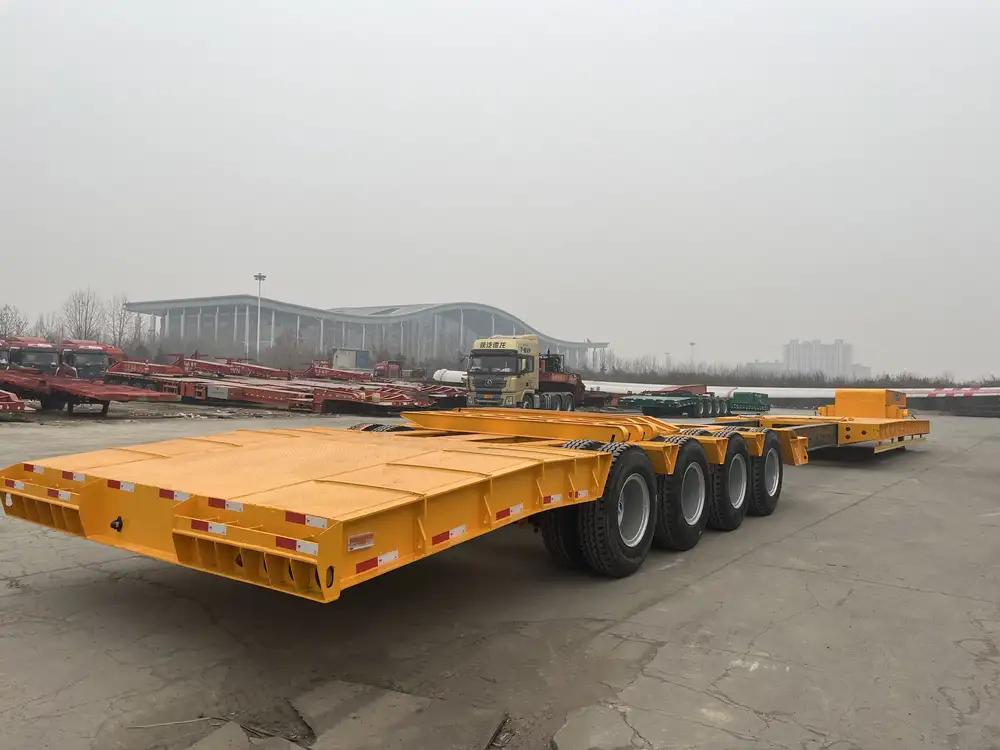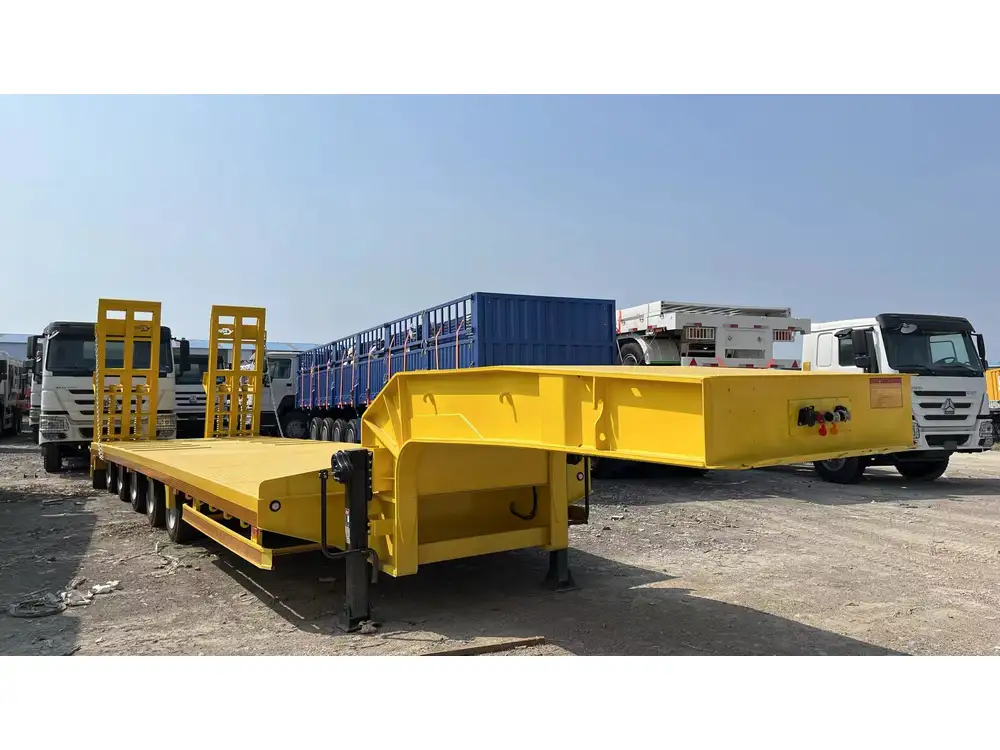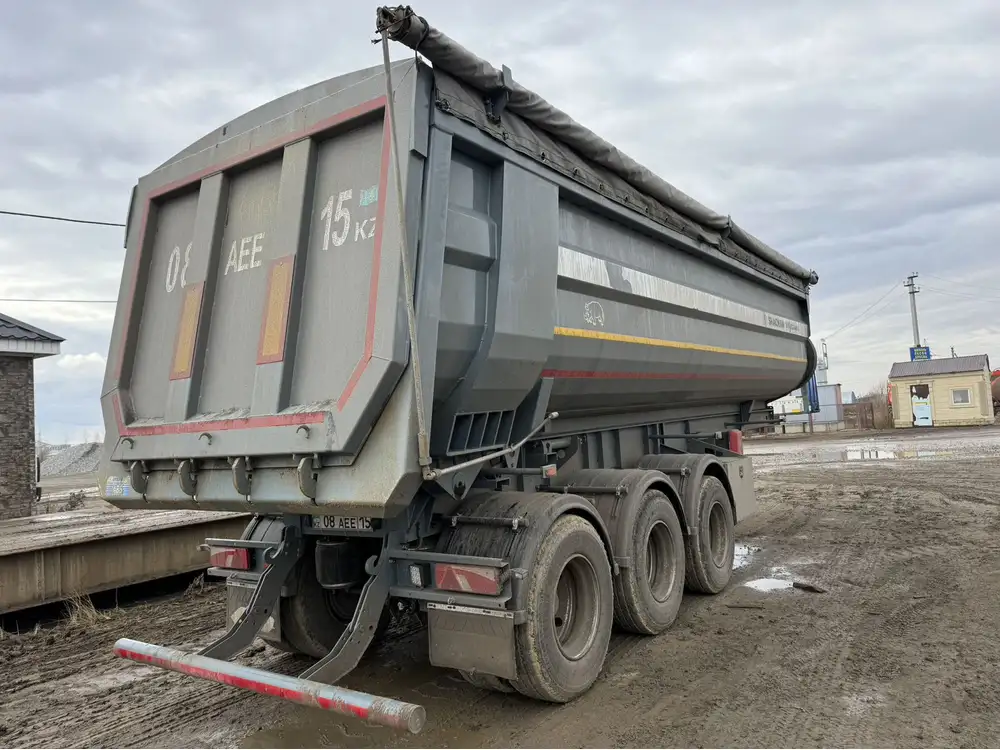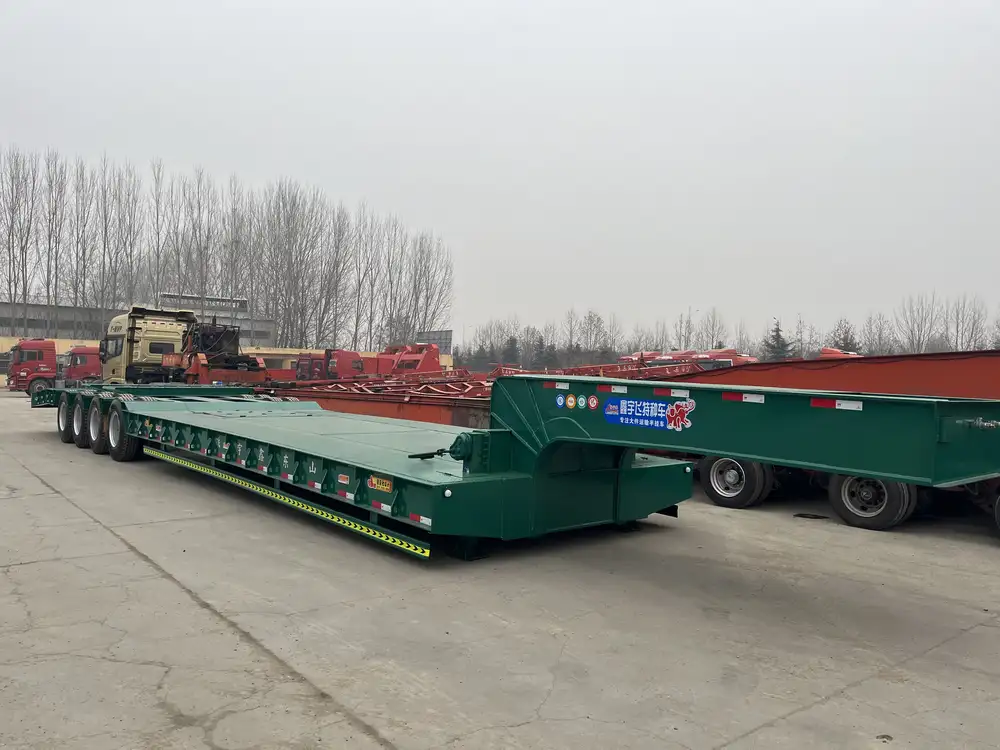When it comes to the transportation industry, the weight of a semi-trailer axle is a crucial aspect that impacts not only compliance with regulations but also the overall efficiency and performance of the vehicle. In this article, we delve deep into this vital component, addressing its significance, variations, and how it plays a pivotal role in the context of semi-trailer manufacturing and usage.
What is a Semi-Trailer Axle?
A semi-trailer axle is a beam that supports the weight of the trailer while allowing it to pivot easily. Typically made of durable materials like steel, this component is engineered to endure heavy loads, facilitating the transfer of weight from the trailer to the wheels. Understanding the weight and specifications of the axle is essential for operators, manufacturers, and regulatory bodies.
Types of Semi-Trailer Axles
| Type of Axle | Description | Usual Application |
|---|---|---|
| Single Axle | Comprises one axle and is lightweight, ideal for less heavy loads. | Cargo vans, small trailers |
| Tandem Axle | Comprises two axles in a single assembly, effectively distributing weight. | Standard trailers for freight |
| Tridem Axle | Includes three axles, designed for heavy hauling and maximum load distribution. | Heavy-duty transport |
| Lift Axle | An additional axle that can be raised or lowered, offering flexibility in weight management. | Specialized transport |

How Much Does a Semi-Trailer Axle Weigh?
The weight of a semi-trailer axle can vary significantly based on several factors, including design, materials, and the intended load capacity. On average, a typical semi-trailer axle weighs between 900 to 1,200 pounds (approximately 400 to 545 kilograms). However, specialized axles, such as heavier-duty or tridem axles, can weigh more, often exceeding 1,500 pounds (680 kilograms).
Factors Influencing Axle Weight
Material Composition: The type of steel used in the construction of the axle can affect its weight. High-strength steel alloys may allow for a lighter yet stronger axle.
Design Specifications: Axles designed to carry heavier loads will inherently weigh more due to increased material density and reinforcements.
Type of Suspension: The suspension system attached to the axle may add additional weight, influencing the total weight output.
Accessories and Components: Auxiliary components such as brake systems, wheel assemblies, and axle housings can contribute to overall axle weight.
Calculating the Total Weight of a Semi-Trailer
To compute the total weight of a semi-trailer, one must consider various components beyond the axles themselves. Here’s a brief breakdown of the common elements contributing to the overall weight:
- Trailer Frame: The main structure providing integrity, typically weighing between 3,000 to 6,000 pounds (1,360 to 2,720 kg).
- Body/Platform: Depending on the design (flatbed, enclosed, etc.), this can add another 2,000 to 5,000 pounds (900 to 2,270 kg).
- Payload: The cargo weight varies significantly based on industry requirements, from a few hundred to several thousand pounds.

Example Calculation
Let’s perform a sample calculation for a tandem axle semi-trailer:
- Axles (2 x 1,100 lbs.): 2,200 lbs.
- Trailer Frame: 4,000 lbs.
- Body/Platform: 3,500 lbs.
- Payload: 20,000 lbs.
- Total Weight: 2,200 + 4,000 + 3,500 + 20,000 = 29,700 lbs.
This is a simplified scenario; variations can occur based on multiple factors.
Importance of Axle Weight Compliance
Understanding and adhering to axle weight regulations is paramount for semi-trailer operations, particularly concerning highway safety and legal standards.
Regulatory Guidelines
Regulatory bodies such as the Department of Transportation (DOT) impose strict weight limits:
- Federal Bridge Gross Weight Formula: Regulates the maximum allowable weight for vehicles with multiple axles. Calculating compliance requires the axle weight measurements to stay within prescribed limits, ensuring safe road travel.

Risks of Overloading
Overloading can lead to:
Increased Tire Wear: Excess weight leads to higher tire wear rates, translating into increased costs and reduced safety.
Structural Damage: Consistently exceeding axle load limits can cause premature wear and damage to both the axles and the trailer frame, leading to significant repair costs.
Legal Penalties: Non-compliance with weight regulations can result in hefty fines and other penalties, including vehicle impoundment.
Wheel Positioning: A Key Consideration
The positioning of wheels relative to the load is a crucial aspect of axle weight management. Proper wheel positioning enhances stability and helps maintain even weight distribution.
Wheelbase and Its Impact
Wheelbase: The distance between axles (for tandem or tridem systems) influences how weight is distributed. Longer wheelbases can provide better balance, allowing for smoother rides and safer handling.
Effects on Maneuverability: A longer wheelbase may restrict maneuverability in tight spaces, while a shorter configuration aids in enhanced agility.

Load Distribution and Weight Management
Correct load distribution across the axles is fundamental for safe operations and compliance. Understanding how to manage and balance loads can stave off numerous problems, including both structural and mechanical failures.
Techniques for Effective Load Management
Center of Gravity Awareness: High centers of gravity can lead to instability. Load should be distributed evenly with heavier items kept lower.
Dynamic Load Monitoring: Utilizing onboard systems to monitor axle weights in real-time helps ensure compliance and safety.
Regular Inspections: Performing periodic inspections enables swift identification of any loading issues or mechanical limitations.
The Future of Semi-Trailer Axles
As technology influences various industries, the semi-trailer manufacturing landscape is evolving, with new designs and materials emerging.

Innovations in Material Science
Advanced Composites: The introduction of strong yet lightweight materials offers the potential for reduced axle weight without compromising strength.
Smart Axles: Integration of sensor technologies to monitor real-time conditions can aid in optimizing weight distribution and enhance safety.
Electric and Autonomous Trailers
Electrification: As electric vehicles gain traction, considerations for axle design will also change, potentially reducing weight and restructuring how trailers operate.
Autonomous Driving: With the emerging autonomous technology, semi-trailer axles will need to accommodate new safety and performance requirements, enhancing their design.
Conclusion
The weight of a semi-trailer axle is a multifaceted subject that impacts various dimensions of transportation and logistics. From regulatory compliance to structural integrity and performance efficiency, understanding the nuances of axle weight is imperative for manufacturers and operators alike. By focusing on intelligent design, effective load management, and ongoing innovations, we can enhance our semi-trailer performance while reinforcing safety and regulatory adherence in the evolving transportation landscape.
By grasping the comprehensive aspects outlined in this article, stakeholders in the transportation sector can make knowledgeable decisions around semi-trailer axles, ensuring a future of optimized performance and sustained compliance with industry standards.



